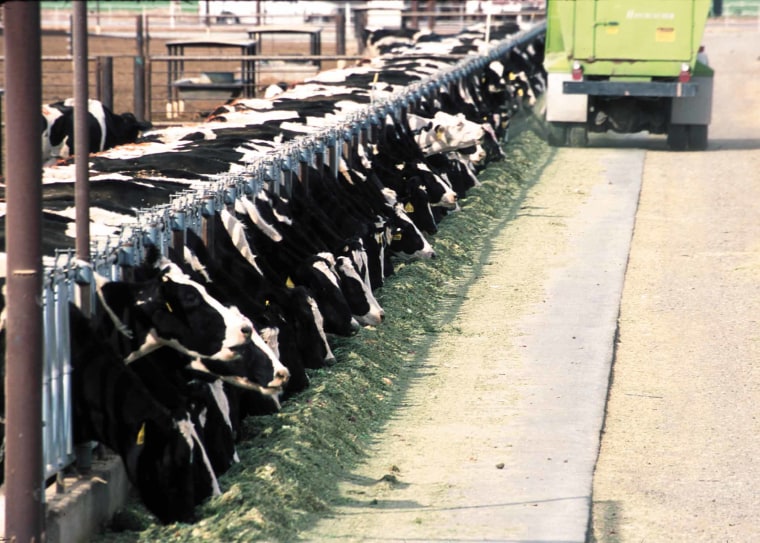Researchers attempting to make the production of corn-based ethanol more efficient may not have needed to leave the farm.
During photosynthesis, corn stores nearly half of its potential energy in places other than the corn kernel, such as stalks and leaves.
An enzyme found in a cow's stomach may hold the key to using all of the plant, rather than just the kernel.
Michigan State University professor Mariam Sticklen was curious as to how a cow's stomach quickly broke down corn and other foods high in cellulose — a material that makes cell walls thick — and if it could be replicated outside of a cow.
Right now the ethanol industry primarily uses corn kernels during production because stalk and leaves contain a type of fiber too tough to break down without expensive chemicals.
Sticklen, however, took a gene from a cow, implanted it into a corn cell, and let the gene replicate an enzyme that breaks down thick material.
The enzyme ends up in the cell's vacuole — a type of garbage bin — where it sits until the plant is crushed to make ethanol.
Spartan Corn III is the culmination of Sticklen's search for a new way to break cellulose into simple sugars for use in fuel.
"I feel this is a start in a revolution for biofuel," Sticklen said.
Kansas-based Edenspace Systems Corp. beat out four other competitors to secure the rights to Sticklen's technology.
"We see this whole area of developing new, value-added crops as one of the key elements in solving the world's need for more food and fuel," said Bruce Ferguson, the company's chief executive.
It is hoped that the new technology creates unprecedented efficiencies in capturing unused energy from corn.
"What we're doing is developing a way to capture that additional 40 percent" that goes unused, Ferguson said.
The company hopes to have a product available by 2011.
